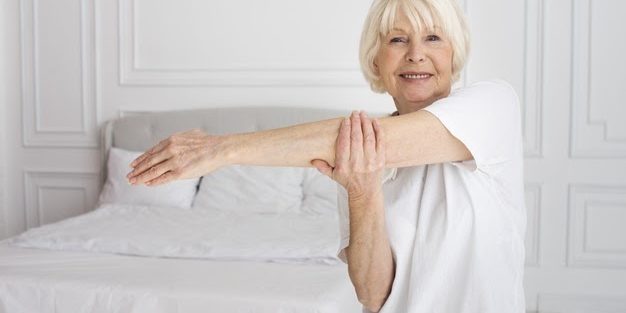Can you still manage to open the lid of a jar? Do you still get up from your chair with ease? And is climbing stairs still easy? If you can answer "yes" to all these questions, your muscle mass is still in good shape. But did you know that as we age, we lose muscle mass? And if you do nothing about it, you will lose strength, mobility and balance. Eventually, nasty falls can result. In this blog, we at friskFysio explain muscle loss, or sarcopenia, and we explain how you can maintain your strength and balance as you get older for as long as possible.
Loss of muscle mass after the age of 50
Did you know that you lose around 1 to 2% of muscle mass every year from the age of 50? From the age of 70, we lose as much as 3.6% per year. Hetfvvdvxvx is simply part of getting older. If you do little exercise, this process is even faster. As age increases, so does lack of exercise. A lot of time is spent sitting. If a person is bedridden, the process of muscle decline is even more rapid. Spending a few days in bed already accounts for 1.5 kilos of muscle loss. Moreover, that lost muscle mass is replaced by fatty tissue, which in itself causes all kinds of health risks.
Muscle strength can only be maintained by using your muscles
Move, move and move again, is the advice. But sometimes that is no longer so easy at a venerable age. So how can you still keep your muscles strong? Our physiotherapist can help. Together with you, we look at what you can still do. With tailor-made training, good coaching, guidance and nutritional advice, you can prevent loss of muscle mass.
Proteins are good fuel for muscle building
Besides a balanced training schedule, it is also important that you take in the right `fuel' to support your muscle building. `uw diet should therefore be high in protein. Proteins are found in fish, meat, eggs, soya, meat substitutes, nuts and seeds, dairy and legumes. Per day, you need at least your body weight x 0.8 grams of protein. That figure in grams is the amount of pure protein needed to maintain muscle mass. For building muscle mass, this is even a bit more. Food packaging often indicates how much protein it contains per 100 grams. One egg contains only 6 grams of protein, but in an 80-gram piece of chicken breast, there is a whopping 30 grams of protein. It pays to keep a close eye on your protein intake.
Want to know how to recognise muscle loss (sarcopenia)? Then pay attention to the following:
- Can't manage to open a jar anymore
- Climbing stairs takes effort
- Getting up from a chair is more difficult
- Clumsy falls
- Walking slows down.
Do you think you have sarcopenia? Or would you like to prevent it? Then contact FriskFysio
Would you like a tailored training schedule and nutritional advice to recover from sarcopenia? Then you can contact contact us by emailing info@friskfysio.nl or calling 085-5000333.





